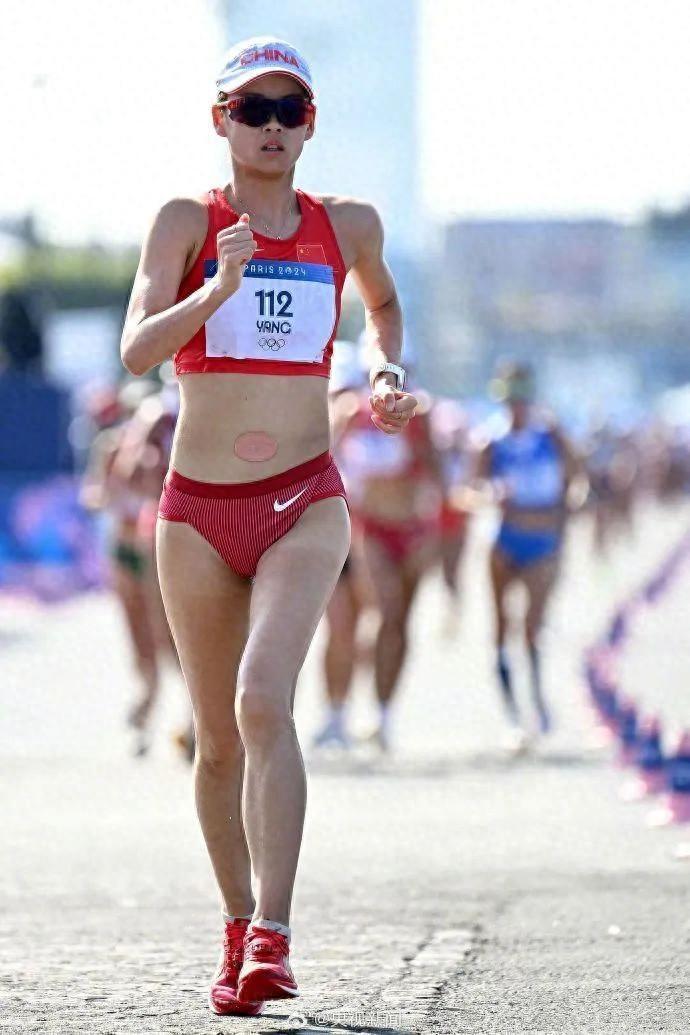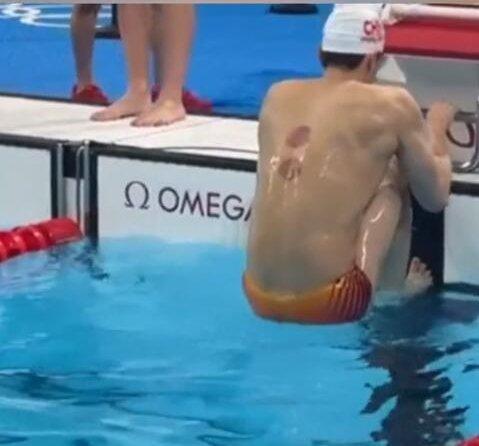
During the ongoing Paris Olympics, some viewers noticed that Yang Jiayu, who won the gold medal in the women's 20-kilometer race walk at the Paris 2024 Olympics, used navel stickers during her competition. People called it the "mystical Eastern power". Yang explained that since athletes wear short clothing, the navel stickers help protect her belly button from exposure to cold water or wind during the race.

From the perspective of traditional Chinese medicine (TCM), using navel stickers is similar in principle to covering the belly button while sleeping. Wu Juan, an acupuncturist at the Affiliated TCM Hospital of Guangzhou Medical University, explains that the navel is a remnant of the umbilical cord from birth and is the last part of the abdominal wall to close during fetal development. Compared to other areas of the skin, the navel is more sensitive because it lacks subcutaneous fat, bone, and strong muscle protection, making it more susceptible to external stimuli.
In TCM, the navel is considered the Shenque acupoint, an important point for health. Methods such as moxibustion, massage, and applying patches here can be beneficial for improving symptoms like diarrhea, abdominal pain, and pain around the navel.
"Navel stickers are suitable for individuals with spleen and stomach deficiencies, cold and damp constitutions, menstrual pain due to cold, and those who are prone to having cold hands and feet with a hot upper body and cold lower body. Besides, it's also beneficial for those with weak constitutions and poor resistance," Wu said.
In addition to navel stickers, cupping therapy is also a familiar sight on the Olympic stage. During the men's 4×100m medley relay final, the cupping marks on the backs of Chinese swimmers were quite noticeable. This isn't the first time cupping has appeared at the Olympics.

Cupping marks were notably seen with swimmer Michael Phelps at the Rio 2016 Olympics and again with swimmers in 2021.
Why do swimmers favor cupping so much? Wu explains that cupping creates a negative pressure on the skin, which helps athletes regulate their Qiand blood, eliminate dampness and cold, relieve muscle fatigue, and restore their physical condition.
Besides navel stickers and cupping, TCM techniques such as massage and acupuncture are also widely used in sports care and rehabilitation to support Olympic athletes.
Wu emphasizes that while TCM techniques are broadly applicable, the best results are achieved with guidance and supervision from qualified TCM practitioners to avoid adverse effects from self-administered treatments.
拔火罐、贴肚脐!“神秘的东方力量”再现奥运赛场
巴黎奥运会正在进行,“追更”赛事的过程中,有人发现我国运动员、巴黎奥运竞走项目金牌得主杨家玉在比赛中贴了肚脐贴,“来自东方的神秘力量”再现奥运赛场。杨家玉回应,由于比赛穿的是短衣短裤,比赛中贴上脐贴可以避免肚脐眼在比赛中接触凉水或受风着凉。
“从中医角度看,奥运选手的肚脐贴和睡觉盖肚脐是同个原理。”广州医科大学附属中医医院针灸科副主任中医师吴涓介绍,肚脐是人类出生后脐带残留的部分,属于在胚胎发育过程中腹壁的最后闭合处,与其他部位皮肤相比,肚脐无皮下脂肪,没有骨骼和坚实的肌肉保护,屏障功能最弱,因此肚脐部位对外界刺激较为敏感。
在中医看来,肚脐是神阙穴的所在,属于保健要穴,在这里艾灸、按摩、穴位贴敷等具有较好的保健功效,对改善腹泻、腹痛、脐周痛等能起到辅助治疗作用。
“脐贴适合脾胃虚寒、寒湿体质、宫寒痛经、上热下寒且容易手脚冰凉的人群,以及体质虚弱、抵抗力较差的人群。”吴涓表示。
值得一提的是,在奥运会上亮相的中医保健技术不仅有脐贴,拔火罐更是奥运“常客”。在男子游泳4×100混接决赛中,中国游泳队的金牌运动员们背上的火罐印有点“抢眼”。据了解,这已经不是拔火罐第一次出现在奥运赛场了。
2016里约奥运会上,游泳名将菲尔普斯一身“火罐印”便引起了广泛关注;2021年,“神秘的东方力量”又出现在了游泳健将们的身上。
拔火罐为何如此受游泳健将的喜爱?吴涓介绍,拔罐会在人体表面产生负压,帮助运动员调理气血、消除湿气和寒气,有助于运动员缓解肌肉疲劳,恢复身体状态。
记者了解到,除了肚脐贴和拔罐外,推拿、针灸等中医医疗技术也广泛应用于运动养护和康复领域,为奥运健儿保驾护航。
吴涓提醒,中医技术应用广泛,但是要想达到最好的效果,还需要中医医护人员指导和监督,自行尝试或造成不良反应。
文|记者 薛仁政 通讯员 徐心怡
图|网络截图
翻译|赵凡
英文审校|林佳岱
-
Poster | The urban oasis has arrived! Yunxi Botanical Garden opened in Guangzhou
2024-08-09 21:36:51 -
Surprising and creative admission letters delight fresh students
2024-08-09 21:20:27 -
Edible dock seeds carried by Shenzhou-16 will undergo cultivation experiments in Shaoguan
2024-08-09 21:20:35 -
Traveling with pets becomes a new trend in China
2024-08-09 21:20:44






